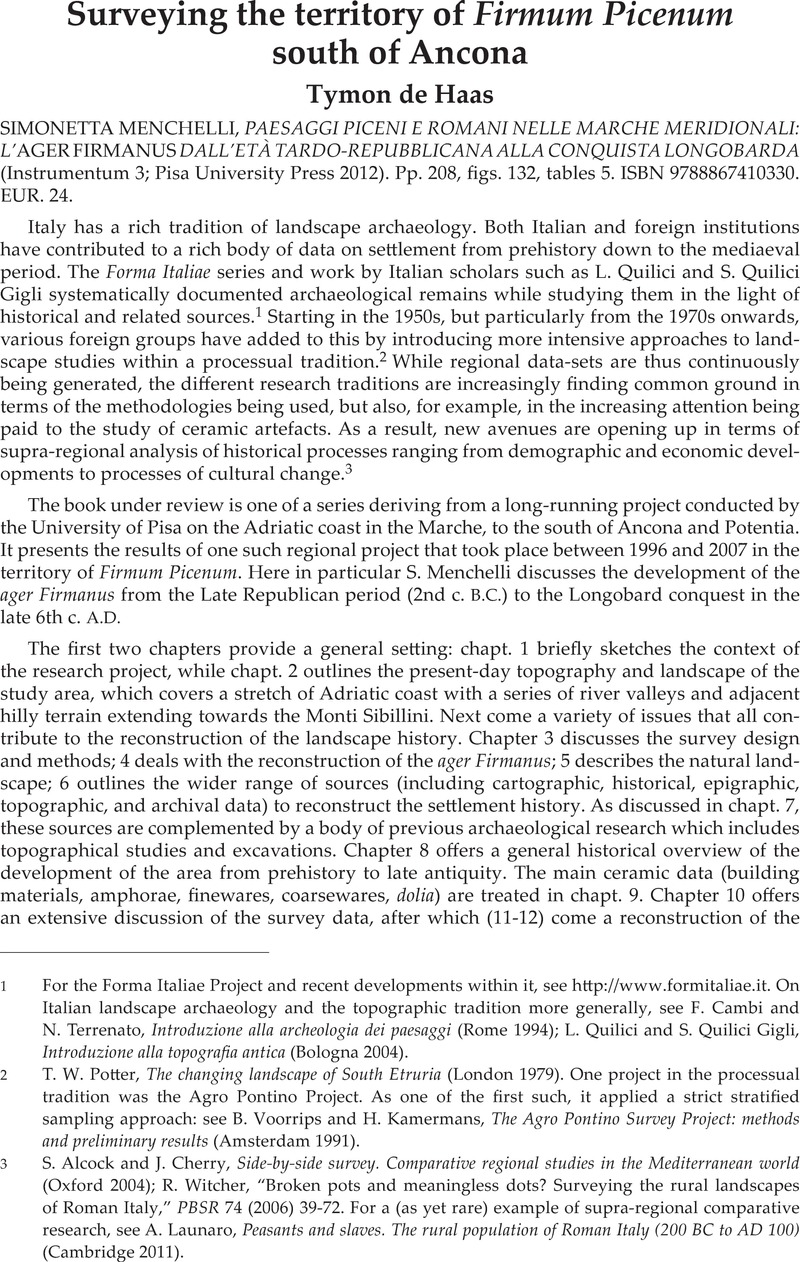No CrossRef data available.
Published online by Cambridge University Press: 27 November 2014

1 For the Forma Italiae Project and recent developments within it, see http://www.formitaliae.it. On Italian landscape archaeology and the topographic tradition more generally, see Cambi, F. and Terrenato, N., Introduzione alla archeologia dei paesaggi (Rome 1994)Google Scholar; Quilici, L. and Gigli, S. Quilici, Introduzione alla topografia antica (Bologna 2004)Google Scholar.
2 Potter, T. W., The changing landscape of South Etruria (London 1979)Google Scholar. One project in the processual tradition was the Agro Pontino Project. As one of the first such, it applied a strict stratified sampling approach: see Voorrips, B. and Kamermans, H., The Agro Pontino Survey Project: methods and preliminary results (Amsterdam 1991)Google Scholar.
3 Alcock, S. and Cherry, J., Side-by-side survey. Comparative regional studies in the Mediterranean world (Oxford 2004)Google Scholar; Witcher, R., “Broken pots and meaningless dots? Surveying the rural landscapes of Roman Italy,” PBSR 74 (2006) 39–72 Google Scholar. For a (as yet rare) example of supra-regional comparative research, see Launaro, A., Peasants and slaves. The rural population of Roman Italy (200 BC to AD 100) (Cambridge 2011)Google Scholar.
4 Cf. Tol, G., A fragmented history. A methodological and artefactual approach to the study of ancient settlement in the territories of Satricum and Antium (Groningen 2012)CrossRefGoogle Scholar.
5 This interpretation would actually imply that they derive from in situ remains and could thus arguably be seen as sites.
6 Locally produced amphoras include wine-containers of Graeco-Italic, Lamboglia 2, Dressel 6A, Dressel 2-4, and a flat-bottomed type, and olive-oil containers of Dressel 6B type.
7 The earlier phases of occupation are evidently in the course of publication by L. Ciucarelli, another member of the team.